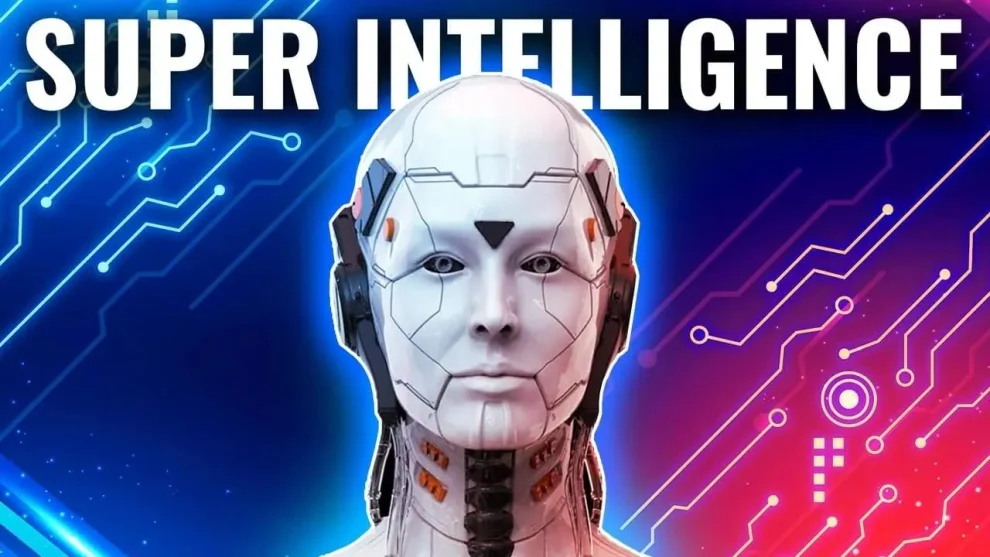As the sun rises over Silicon Valley, a palpable buzz of excitement and trepidation fills the air. Tech leaders and AI experts are engaged in a heated debate that could shape the future of humanity. The topic at hand? The imminent arrival of AI superintelligence and its potential to revolutionize every aspect of our lives.
The Countdown to Superintelligence Begins
On a crisp Monday morning, September 23, 2024, OpenAI CEO Sam Altman dropped a bombshell that sent shockwaves through the tech community. Speaking from his sleek office overlooking the San Francisco Bay, Altman proclaimed that the world could be “a few thousand days” away from creating artificial superintelligence.
As I stand outside OpenAI’s headquarters, a crowd of journalists and tech enthusiasts has gathered, all eager to understand the implications of Altman’s bold prediction. The atmosphere is electric, reminiscent of the days leading up to major technological breakthroughs of the past.
What is Superintelligence?
To understand the gravity of Altman’s statement, we must first grasp what superintelligence truly means. Artificial superintelligence (ASI) represents a quantum leap beyond our current AI capabilities, surpassing human cognitive abilities across all domains.
Dr. Emma Chen, an AI researcher at Stanford University, explains it to me in layman’s terms: “Imagine an intelligence that can solve complex scientific problems, create breathtaking art, and optimize global systems – all in the blink of an eye. That’s the potential of ASI.”
This concept goes beyond even the much-discussed artificial general intelligence (AGI), which aims to match human-level intelligence. ASI, in contrast, would leave human capabilities in the dust.
Altman’s vision, as outlined in his blog post titled “The Intelligence Age,” paints a picture of a future where AI acts as a force multiplier for human achievement. He envisions a world where each individual has access to a personal AI team, comprised of virtual experts in various fields.
“We’ll soon be able to work with AI that helps us accomplish much more than we ever could without AI,” Altman wrote, his words brimming with optimism. He goes on to describe a future where children have personalized AI tutors and healthcare reaches unprecedented levels of effectiveness.
As I speak with attendees at a nearby AI conference, many share Altman’s enthusiasm. Sarah Johnson, a software engineer, tells me with excitement in her eyes, “The potential for AI to solve global challenges like climate change or cure diseases is mind-boggling. It’s like we’re on the brink of a new Renaissance.”
However, not everyone in the tech world shares Altman’s timeline or unbridled optimism. As I make my way across the city to Meta’s headquarters, I’m reminded of the words of Yann LeCun, Meta’s Vice President and Chief AI Scientist.
LeCun, speaking to CNBC last year, cautioned that superintelligent AI is still decades away. He emphasized that current language models, despite their impressive capabilities, still lack basic understanding despite massive amounts of training data.
This divide in opinion highlights the uncertainty surrounding the development of ASI. It’s a reminder that even among the brightest minds in the field, the path to superintelligence remains unclear.
As the day progresses, I find myself in a bustling coffee shop in downtown San Francisco, where a group of economists and tech executives are engaged in a lively debate about the potential impact of ASI on the job market.
Brandon Da Silva, CEO of ArenaX Labs, doesn’t mince words: “I’m pretty certain superintelligence will displace most jobs, and not just white-collar but blue-collar jobs as well.” His statement hangs in the air, causing a momentary hush in the normally noisy café.
Da Silva’s prediction is stark, envisioning a future where even highly skilled and creative jobs traditionally reserved for humans could be performed by AI. He paints a picture of a world where artificial firefighters could become a reality, fundamentally altering our concept of work.
However, not everyone sees such a bleak future for human employment. Matt McMullen, chief operating officer of Realbotix, offers a more balanced perspective. “It will likely do both,” he says, referring to job automation and creation. McMullen draws parallels to past technological revolutions, which often created new opportunities alongside disruption.
“From the hardware to the software systems needed to advance the tech, there will be new places for people to be part of these advances,” McMullen explains. He envisions novel career paths emerging from ASI development, including “new roles in AI maintenance, ethics oversight and human-AI collaboration.”
As the sun begins to set, casting long shadows across the city’s iconic skyline, I find myself pondering the implications of ASI for the business world. The consensus among the experts I’ve spoken with is clear: access to superintelligence could be a game-changer for companies.
Da Silva doesn’t hold back in his assessment: “If there’s any one company hoarding it, then they will just dominate the industry because they’re going to be able just to deploy many instances of this thing and have almost infinite resources to build and deploy whatever they want.”
McMullen echoes this sentiment, drawing a comparison to past technological shifts. Consider when digital music began to eclipse analog music,” he says. Inevitably, the digital revolution was one that couldn’t be avoided in the world of music.” He predicts that “businesses that quickly adopt superintelligence may gain significant advantages in efficiency and innovation, potentially disrupting entire industries.
As night falls over Silicon Valley, the debates and discussions show no signs of slowing down. The potential arrival of AI superintelligence within the next few years has ignited a firestorm of speculation, hope, and concern across the tech industry and beyond.
While the exact timeline remains uncertain, one thing is clear: the development of ASI has the potential to reshape our world in ways we can scarcely imagine. From transforming commerce and revolutionizing healthcare to fundamentally altering the nature of work, the impact of superintelligent AI could be all-encompassing.
As I prepare to file this report, I’m struck by the weight of the moment. We stand on the precipice of what could be the most significant technological leap in human history. Whether Altman’s prediction of “a few thousand days” proves accurate or not, the race towards superintelligence is undoubtedly on, and its consequences will shape the future of humanity for generations to come.
















Add Comment